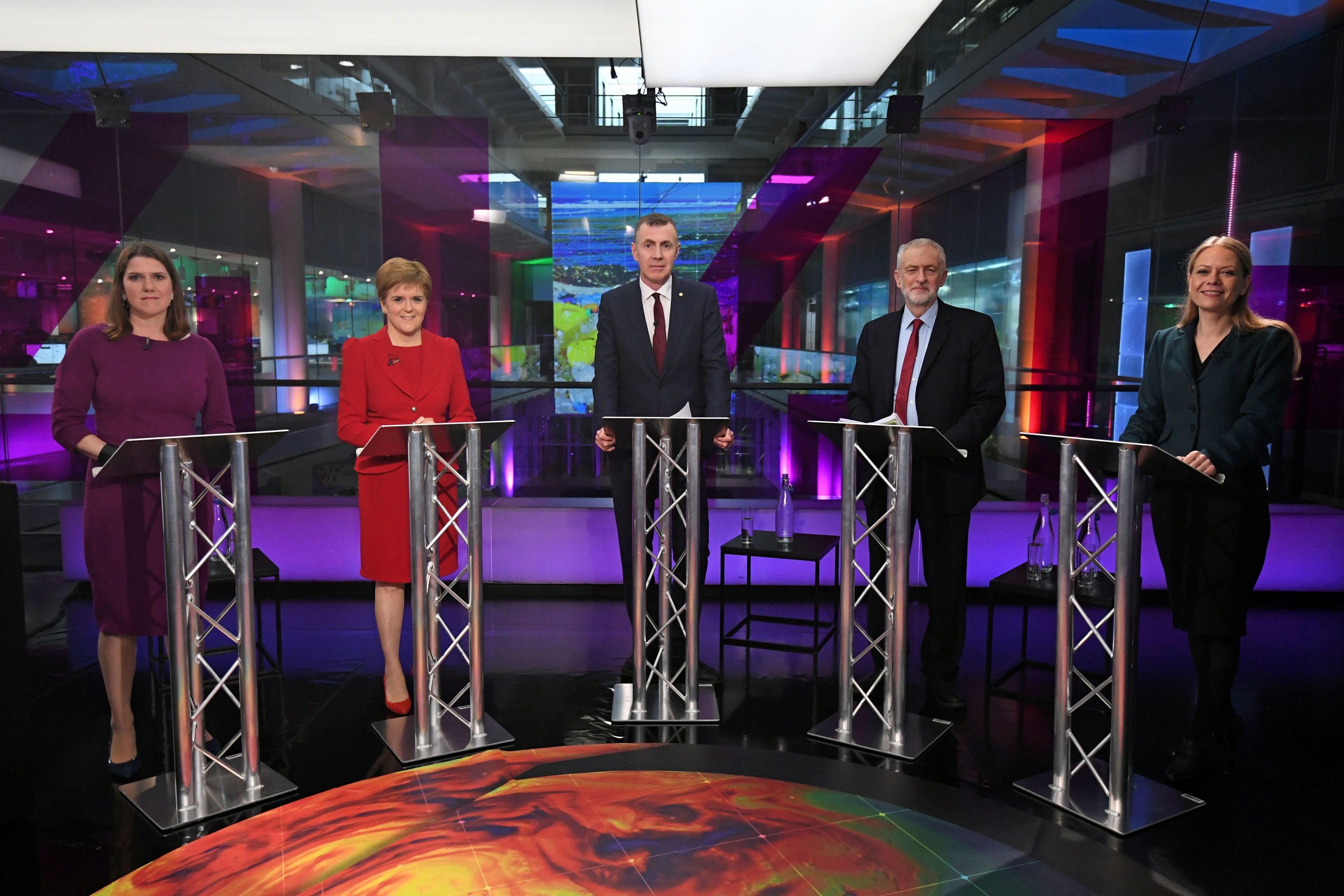The Future of Brexit in the Light of the 2019 UK General Elections Campaign

The immediate reason for the elections was the lack of a majority in the House of Commons for either ratifying the renegotiated Withdrawal Agreement with the EU or creating an alternative to the government of Boris Johnson. The larger reason is the deep change in British politics over the last several years. Pre-election polls systematically point to a Tory lead (about 40%) at the expense of Nigel Farage’s Brexit Party (5%) and in the face of fierce competition with the Centre-Left (Labour: 30%; Liberal Democrats: 15%). The elections will be determined by the rivalry between the two dominant parties and their joint competition with the Brexit Party and the “Remain alliance” of the LibDems, Greens, and Welsh nationalists, who are working together to transform the political system into a multi-party one.
Changes to the Party System
The 2017 elections were dominated by the Tories and Labour, which combined won 82% of the votes and 89% of the seats. Support for the two parties was exceptionally high because they had each declared consensus on a relatively hard Brexit (including exit from the common market). However, since the signing of the original Withdrawal Agreement by then-Prime Minister Theresa May on 24 November 2018, there has been an intensifying public conflict within the Conservative Party over the Brexit model, eventually won in July by the Eurosceptic wing with the election of Boris Johnson as prime minister. In parallel, the Tories’ pro-EU wing was neutralised with the loss of the Tory whip, resignations, and the retirement of more than 30 MPs. On the other hand, the Labour Party shifted its support from leaving the common market to a soft Brexit (membership in the customs union and the common market) combined with a second referendum. The party has also lost many MPs with recognizable pro- and anti-Brexit views and often critical of Jeremy Corbyn’s leadership. The more extreme positions on either side of the Brexit debate came to be occupied by Farage’s party and the Remain alliance due to their outstanding results in the European elections in May.
Party Positions and the Elections
Paradoxically, the elections have been forced by the cooperation of parties with opposing views on leaving the EU, joined by their desire to focus the campaigns on the Brexit question. This is because of profound changes in the electorate, with currently only half of Britons declaring loyalty to any party, while an attitude towards Brexit is central to the political identity of about 80% of them.
Therefore, with Brexit postponed again until January, the timing of these elections have made it possible to present voters with a wide range of pledges in this regard: the Brexit Party promotes a “no-deal” Brexit, the Tories seek ratification of a renegotiated agreement, the Labour Party wants a referendum, and the Liberal Democrats and Scottish nationalists (SNP) want Brexit cancelled. The December date was preferred by the Tories, the SNP, and the Remain alliance after they noted an increase in support in the polls thanks to their straightforward positions on Brexit, as well as the recognition by EU-supporters in the UK that such a campaign would offer the last chance to stop the country from leaving the European Union. The Labour Party, despite its status as the Official Opposition, supported the elections only after a majority in favour of them formed in the House of Commons. Importantly, Labour has been held back by low poll numbers resulting from the internal party dispute over Brexit.
Election Strategies
The Tories aim to capitalise on their success on 17 October in removing from the renegotiated Withdrawal Agreement the provisions on the UK’s continued participation in the customs union and the common market after Brexit. This corresponds to their strategy of acquiring new voters in Labour’s post-industrial strongholds that were crucial to the outcome of the 2016 referendum. Meanwhile, the LibDems and their allies are trying to take over seats in the anti-Brexit parts of England and Wales held by either of the dominant parties.
The SNP’s goal is to take over some of the Labour seats in Scotland and obtain a political mandate to rerun the 2014 independence referendum. In the event of a centre-left victory, the mere fact of repeating the Brexit referendum would support the campaign for one in Scotland. If Labour must depend on SNP to form a minority government, that would make an independence referendum almost unavoidable.
In contrast to the other parties, Labour is trying to focus the campaign on issues with public services (especially the NHS), the labour market, and “interventionism” (e.g., nationalisation of railways and waterworks), which are policy areas where the party’s credibility is the highest and attacks against the party’s leader bring the slightest damage. However, these efforts are hampered by harsh criticism of Corbyn in the context of national security, including by some members of his own party (e.g., his lack of support for the UK’s nuclear programme, his contacts with terrorist organisations such as Hamas and the IRA). For more than a year now, representatives of Jewish communities, including some affiliated to the party, have been consistently raising charges against Corbyn of promoting anti-Semitism in the Labour Party under his leadership.
The campaign has also been characterised by an unprecedented number of electoral pacts and the promotion of tactical voting. Since the UK electoral system requires a separate plurality in each constituency to win seats (first past the post) and the votes obtained by the parties do not accumulate on the national level, so a local (even if minimal) majority over the competitors is required. Therefore, Farage, in limiting his party’s campaign to constituencies defended by the Labour Party, has made it easier for the Tories to win seats in these areas by splitting Labour Party voters. Meanwhile, the liberal alliance has been promoting 60 joint candidates in England and Wales in support of the Brexit repeal. However, the centre-left has been divided by fierce competition between Labour, the Liberal Democrats, and SNP, which weakens their collective ability to promote anti-Brexit candidates. Therefore, in parallel to the parties, the promotion of tactical voting in support of staying in the EU has been undertaken by NGOs, such as Remain United. On the other side of the Brexit spectrum, Leave.EU has been playing a similar role.
Scenarios
The first one is based on the Tories obtaining an outright parliamentary majority—without potential coalition partners—to extend Johnson’s time in office. This would give the PM time for ratification before the 31 January deadline of the 17 October Withdrawal Agreement. The new government’s five-year mandate would correspond with the new term in office of the European Parliament and the Commission, which could facilitate the conclusion of a free-trade agreement before the start of the next election cycle in the UK and the EU. This scenario assumes a controlled loosening of EU-UK economic relations while maintaining security and foreign affairs cooperation. However, there is a possibility of not ratifying the agreement on future relations before the end of the transition period, which would lead to economic effects similar to a “no-deal” Brexit.
The second scenario is based on a joint victory for the centre-left. The most likely variant is a minority government of the Labour Party supported by smaller parties. This scenario implies subjecting Brexit to a second referendum, with the choice of remaining in the EU or leaving the EU’s political structures and remaining in the common market and customs union. The subsequent campaign would require another delay in leaving the EU by at least several months. The radical variant of this scenario involves stopping Brexit at the price of the referendum being boycotted by 2016 Eurosceptic voters and their representatives from the Conservative and Brexit parties.
Opinion polls show the most likely scenario is an outright Tory victory. This would mean the stabilisation of EU-UK relations based on a relatively hard Brexit model. The challenges for the EU in this scenario involve agreeing on a new negotiating mandate and concluding an agreement on future relations within a narrow time frame (in 2020 or, in case of a transition extension, in 2022 at the latest). Consequently, the “no-deal” option should not be excluded if the negotiations are prolonged. Importantly, the 2019 general election result is extremely difficult to forecast. The weakening of voters’ party identity, the debut in the parliamentary elections of the Brexit Party, combined with the campaigns for tactical voting, and topped with emergencies like floods and the recent terrorist attack, mean that the statistical models used in the past have only limited value.


